The World of Stonehenge Exhibition
From February to July 2022, the British Museum is hosting a landmark exhibition telling the story of prehistoric Europe. The focus is on the iconic Neolithic monument, and most famous stone circle in the world, Stonehenge.
From the hunter-gatherers of the Mesolithic period, to the artists and astronomers of the late Bronze Age, the exhibition presents the dynamic story of people’s changing ideas, skills and beliefs throughout 3,000 years of prehistory.
On display are fascinating objects, including green stone axes from the Italian Alps, the astonishing Nebra Sky Disc from Germany, decorated stones from Orkney, elaborate gold jewellery from Ireland and an entire timber monument known as Seahenge from Norfolk.
Image: Nebra Sky Disc, Germany, about 1600 BC. Photo courtesy of the State Office for Heritage Management and Archaeology Saxony-Anhalt, Juraj Lipták.
Discovering Stonehenge
This exhibition sets Stonehenge into its wider European context like never before, allowing visitors to learn about the broader story of prehistory. Throughout, Stonehenge is a touchstone, a signpost, which will help to orientate through the times before, during and after the monument was built.
To uncover the full story of Stonehenge, there is nothing like seeing the monument for yourself and exploring the surrounding landscape. We recommend combining your visit to the British Museum exhibition with an unforgettable trip to this iconic World Heritage Site. Our on-site exhibition, recreated Neolithic houses and downloadable audio app bring Stonehenge, and the people who built it, to life.
Featured objects from the Stonehenge landscape
![]()
Stonehenge grave goods
Stonehenge grave goods
- Date: c.3000 BC
- Material: Stone, ceramic and bone
- Place Made/Found: Stonehenge
- Lender: The Salisbury Museum
These objects were found accompanying cremations that were buried in and around the Aubrey Holes at Stonehenge between 3050–2815 BC; men, women and children. These people were accompanied by only a few grave goods. These include this beautiful striped gneiss macehead, probably made using stone from Western Scotland, a small ceramic dish and some worked flint tools. The slender bone pins, known as ‘skewer pins’, were burnt during the cremation, and therefore probably held together funerary shrouds.
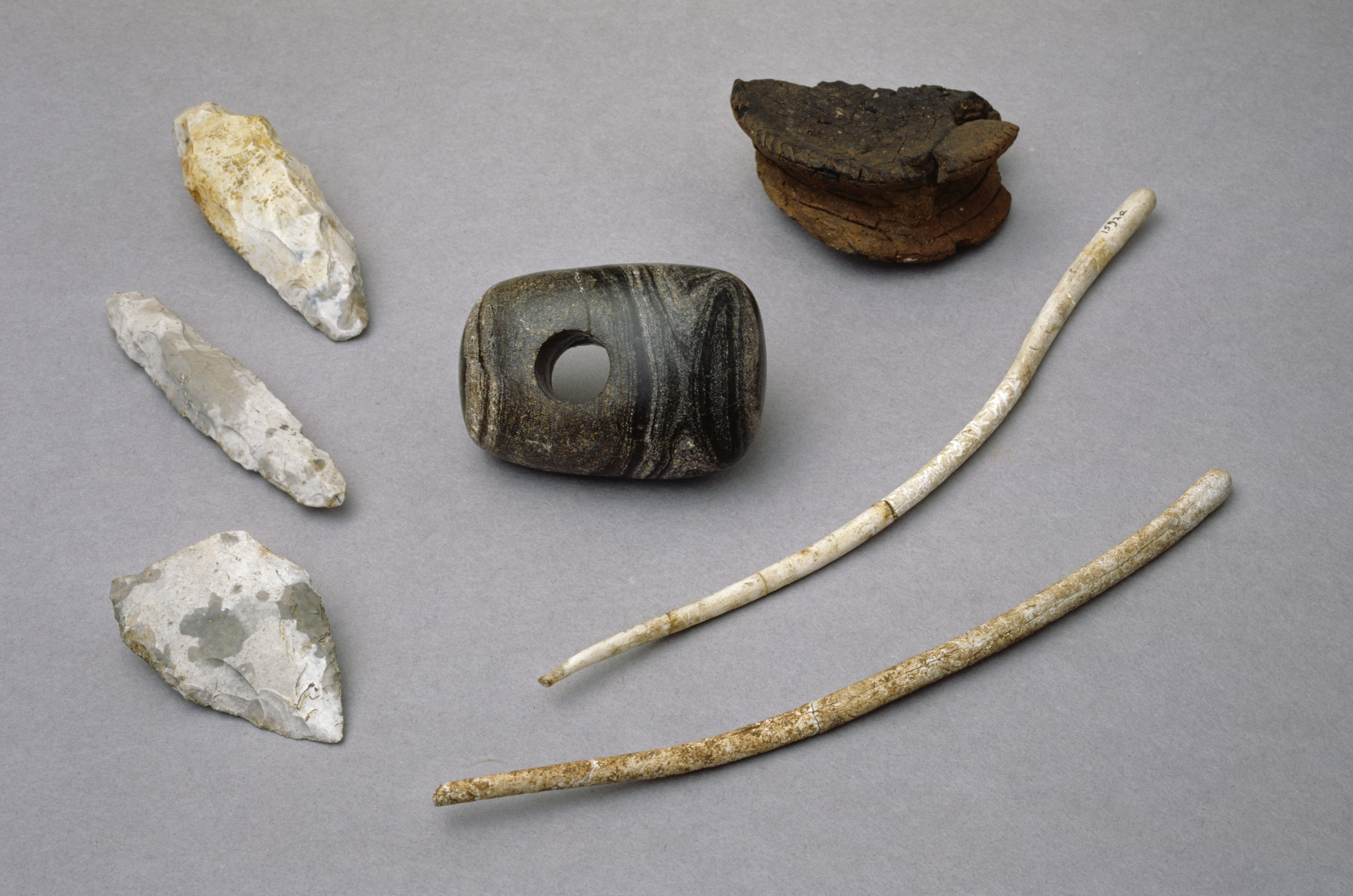
![Some of the many hammerstones discovered during archaeological excavations at Stonehenge Some of the many hammerstones discovered during archaeological excavations at Stonehenge]()
Hammerstones
Hammerstones
- Date: c.2500 BC
- Material: Stone (flint and sarsen)
- Place Made/Found: Stonehenge
- Lender: The Salisbury Museum
A variety of sizes of hammerstones have been found at Stonehenge during excavations, and in the field to the north of the monument where much of the stone dressing took place. Most of the hammerstones are made of quartzite sarsen, and a few of flint. They were used to bash away at the sarsen stones, shaping them into more regular blocks and forming the joints that held together the uprights and lintels.
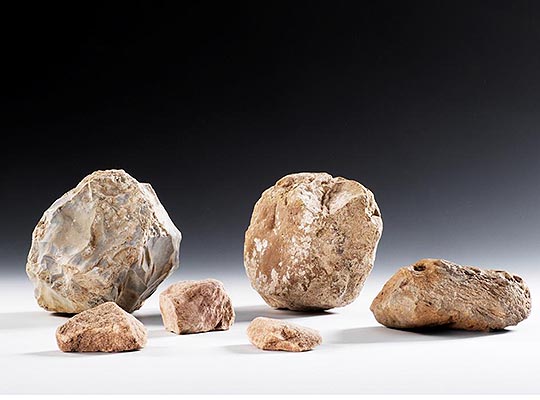
![]()
Grooved Ware pottery
Grooved Ware pottery
- Date: c.2500 BC
- Material: Ceramic
- Place Made/Found: Durrington Walls
- Lender: The Salisbury Museum
This style of pottery, with a flat base and incised or applied geometric decoration, is typical of the late Neolithic in Britain and Ireland. The vessels were made in a variety of sizes, from relatively small pots like this one to much larger containers for storage or cooking large quantities of food. This pot was excavated at Durrington Walls, the settlement near Stonehenge that was occupied at the time the main stone monument was built. Analysis of residues within the clay suggest that at that site these pots were used to cook beef, pork and dairy products.
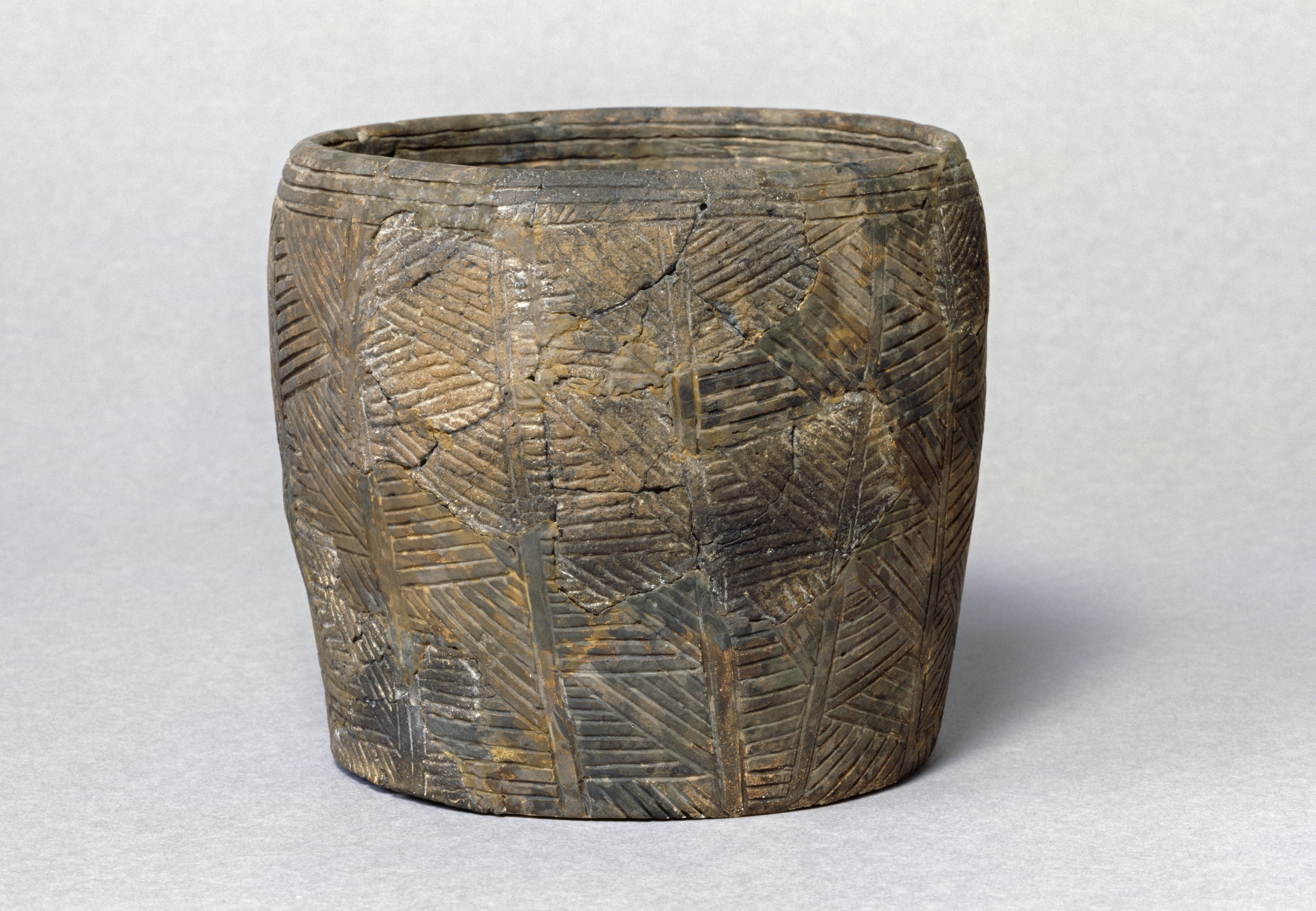
![]()
Pig bone with embedded arrowhead
Pig bone with embedded arrowhead
- Date: c.2500 BC
- Material: Flint and bone
- Place Made/Found: Durrington Walls
- Lender: The Salisbury Museum
This pig bone has the tip of a flint arrowhead embedded in it, showing that the animal had been shot with a bow and arrow. Several of these have been found at Durrington Walls, showing that people were shooting domestic pigs in some sort of sport or ceremony, probably during seasonal feasts and gatherings that seem to have taken place especially at midwinter.
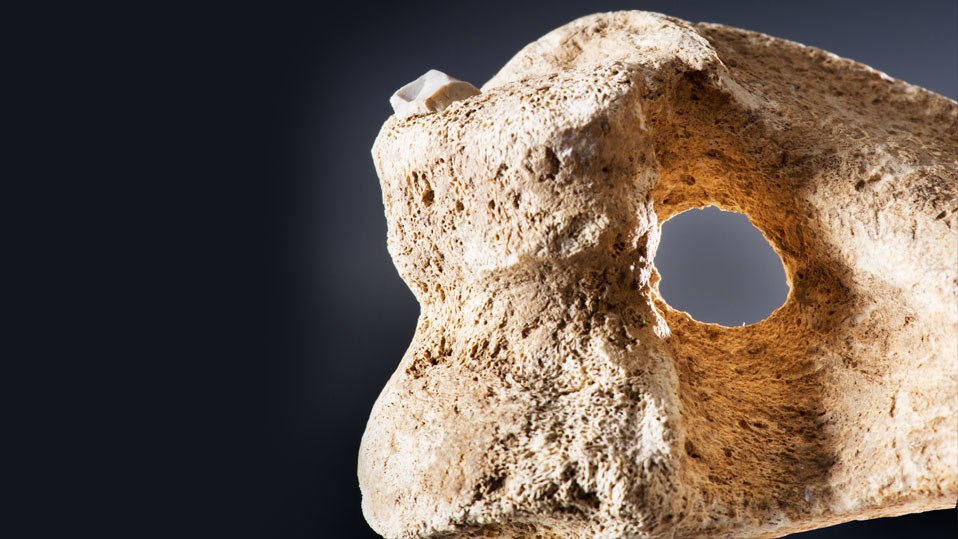
![Gold hair ornaments from the Amesbury Archer burial Gold hair ornaments from the Amesbury Archer burial]()
Amesbury Archer gold jewellery
Amesbury Archer gold jewellery
- Date: c.2300 BC
- Material: Gold
- Place Made/Found: Near Amesbury
- Lender: The Salisbury Museum
These two small gold items were found with a man who was buried three miles east of Stonehenge, shortly after the monument had been constructed. They are either hair tresses or earrings, and represent some of the earliest gold found in Britain. The man, dubbed ‘the Amesbury Archer’ was accompanied in the grave by five Beaker pots, three copper knives, two sandstone wristguards or bracers, 15 flint arrowheads and a bone pin, as well as various stone and metalworking tools. Isotopic analysis has shown that this man was an early Bronze Age migrant, coming to Britain from central Europe.
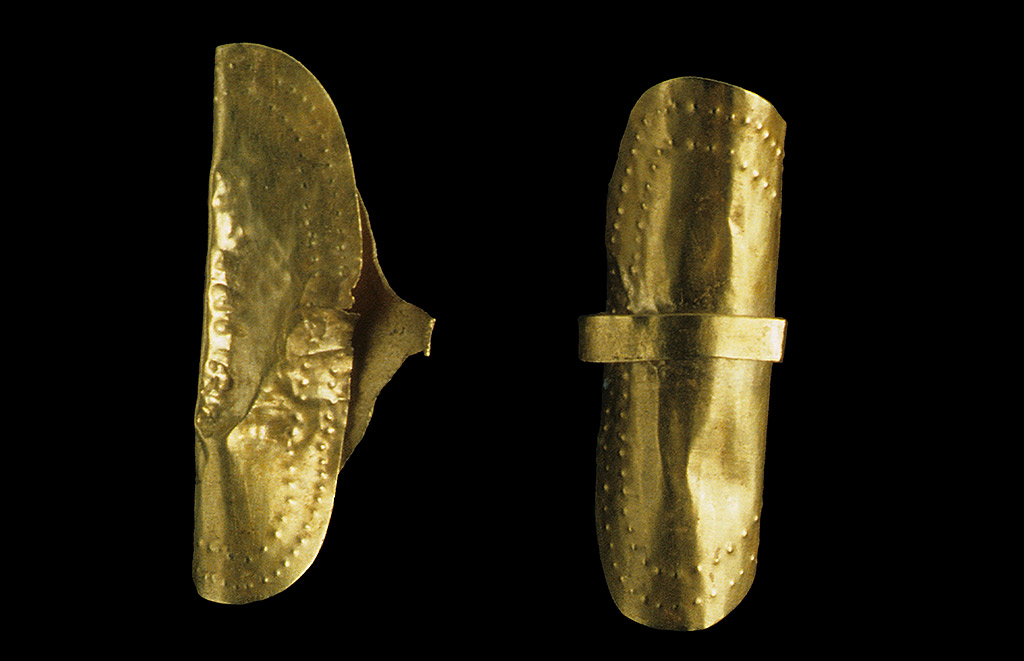
![]()
Stonehenge archer wrist guard
Stonehenge archer wrist guard
- Date: c.2250 BC
- Material: Stone
- Place Made/Found: Stonehenge ditch
- Lender: Salisbury & South Wiltshire Museum
This stone wrist guard, or bracer, was worn strapped to the wrist to protect the arm when firing a bow and arrow, or perhaps used when holding tame birds of prey. It was found with a 25–40-year-old man buried in the henge ditch at Stonehenge, who had met a brutal end when he was shot in the back with at least three flint arrowheads. It is possible that this man was the victim of conflict between different groups of people in the early Bronze Age.
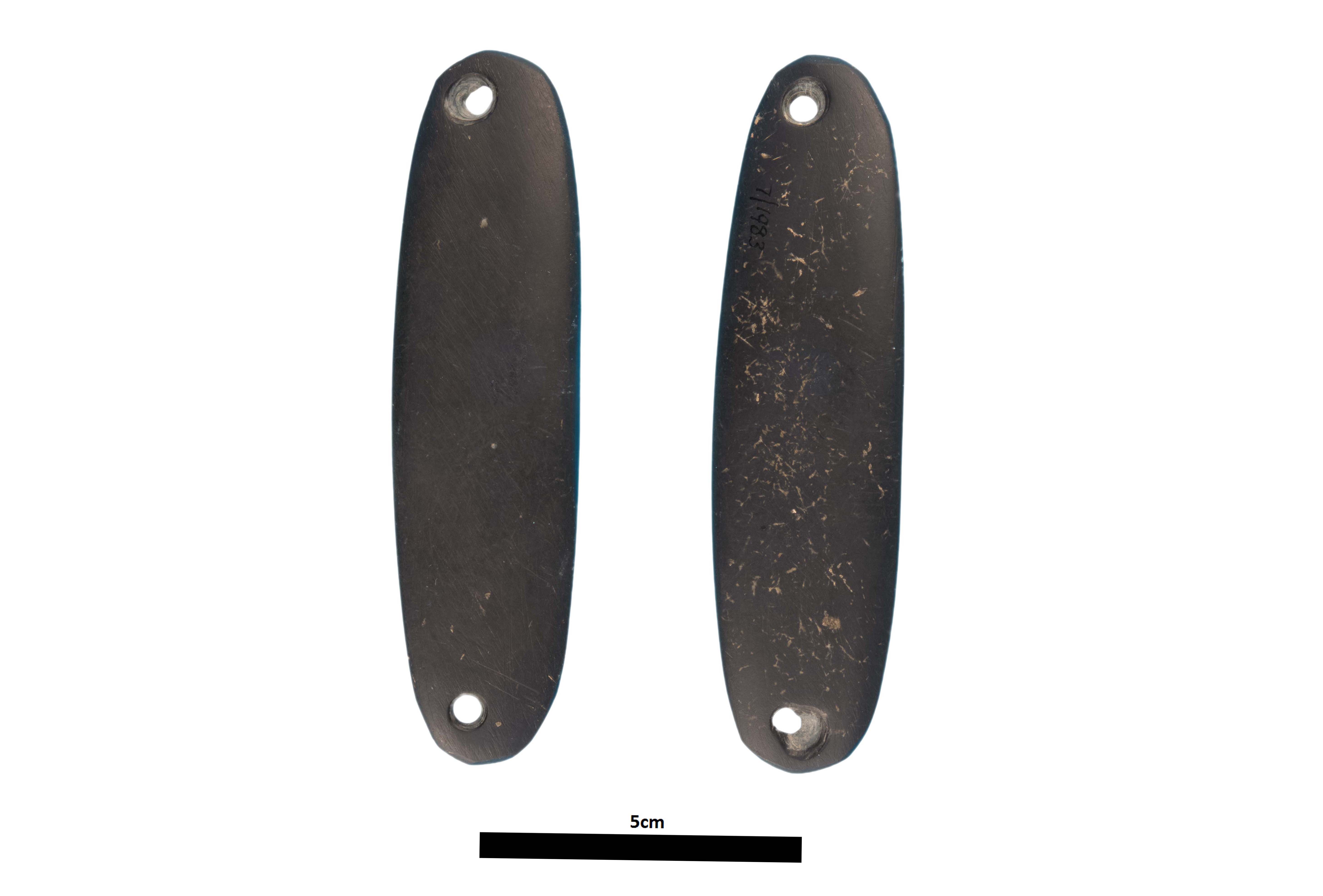
![]()
Bush Barrow grave goods
Bush Barrow grave goods
- Date: c.1800 BC
- Material: Gold
- Place Made/Found: Normanton Down
- Lender: Wiltshire Museum
These astonishing items were found with the burial of a man in ‘Bush Barrow’ on Normanton Down, to the south of Stonehenge. The barrow was excavated in 1808 by Sir Richard ‘Colt’ Hoare and William Cunnington. They found a gold breastplate, gold belt hook, bronze axe, two bronze daggers, a smaller gold lozenge, a dagger handle inlaid with tiny gold studs and a macehead with decorative bone mounts which would have been part of its handle. This is the richest early Bronze Age burial from the Stonehenge area.
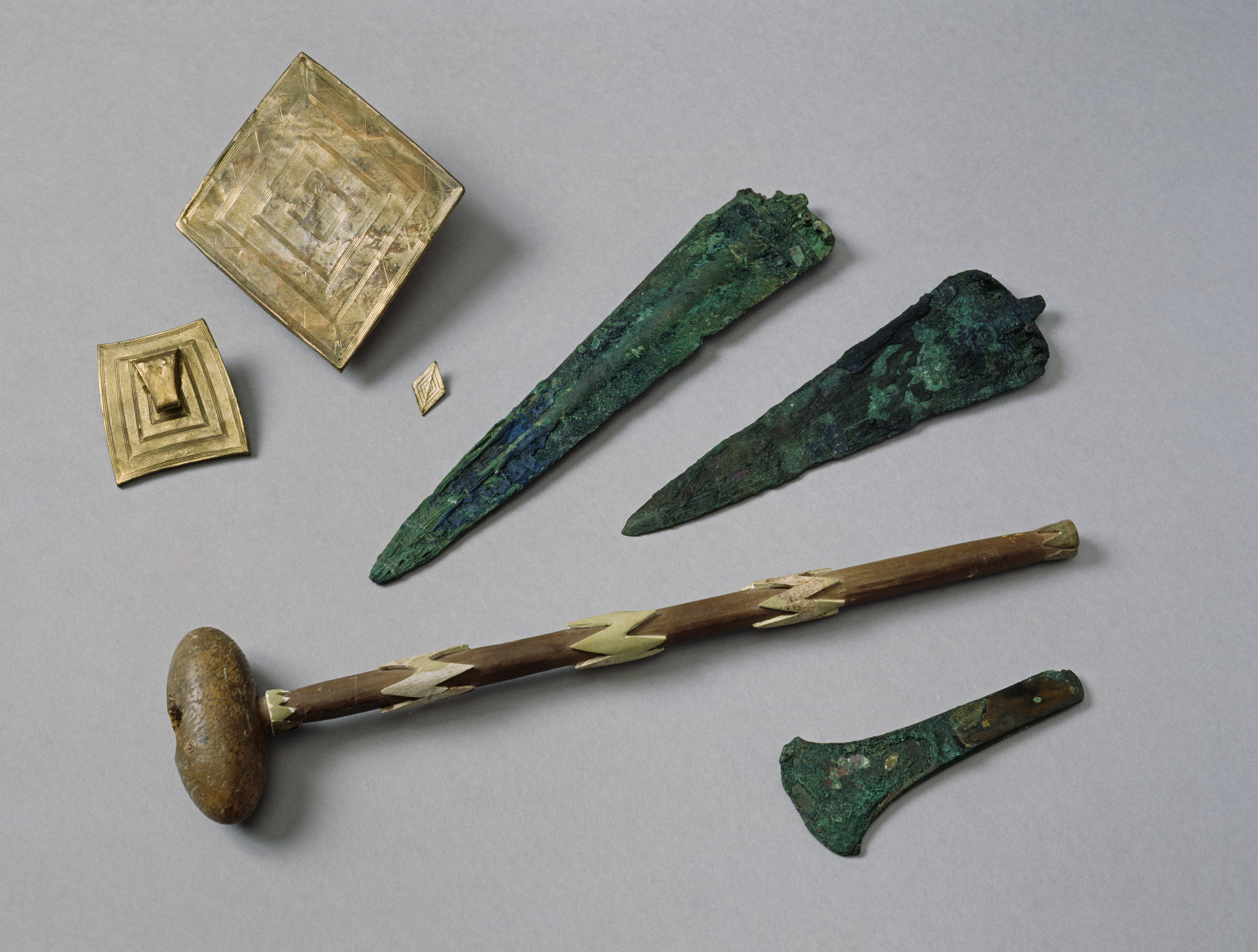
![]()
Decorated chalk plaques
Decorated chalk plaques
- Date: c.2700 BC
- Material: Chalk
- Place Made/Found: ‘Chalk Plaque Pit’, 2 km east of Stonehenge
- Lender: The Salisbury Museum
These two decorated chalk plaques were found in a pit near King Barrow Ridge, where they had been placed along with animal bones and sherds of Grooved Ware pottery, probably the remains of a feast. The geometric incised designs are typical of the abstract art found on stone, pottery and chalk from the late Neolithic period. Placing these objects into the pit may have been some sort of offering, or perhaps marked the end of an important event.
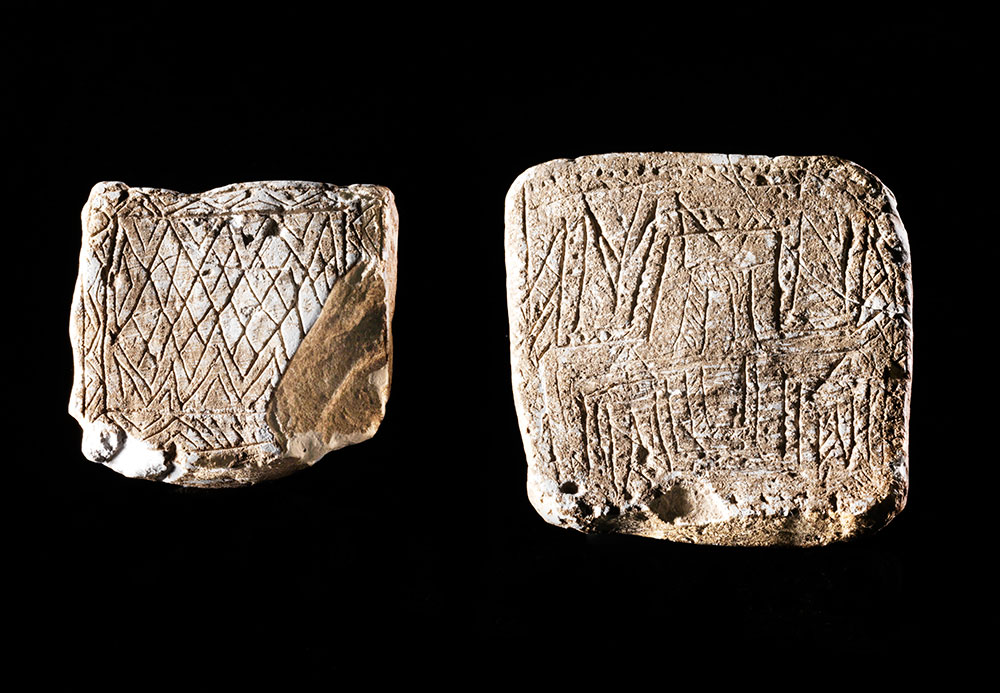
Travel to Stonehenge and London
For the ultimate experience, combine a visit to ‘The World of Stonehenge’ with a trip to see the iconic monument itself. There are many ways to travel between London and Stonehenge.
- Car. It takes around 2 hours to drive from London to Stonehenge via the M3 and A303. Parking is available at the Stonehenge visitor centre.
- Train. Trains regularly depart to and from London’s Waterloo Station and Salisbury Station.
- Bus. A bus departs from Salisbury Station and the City Centre to Stonehenge. Services are also available from London to Stonehenge by many private tour operators.
Buy the Exhibition Catalogue
Get your copy of the accompanying hardback catalogue to the British Museum exhibition The world of Stonehenge.
Buy now







